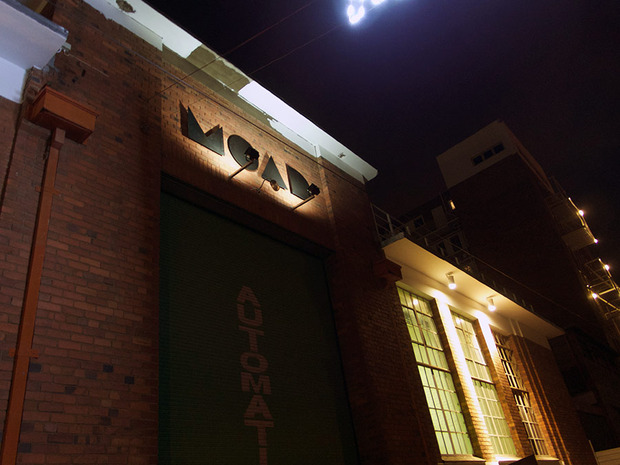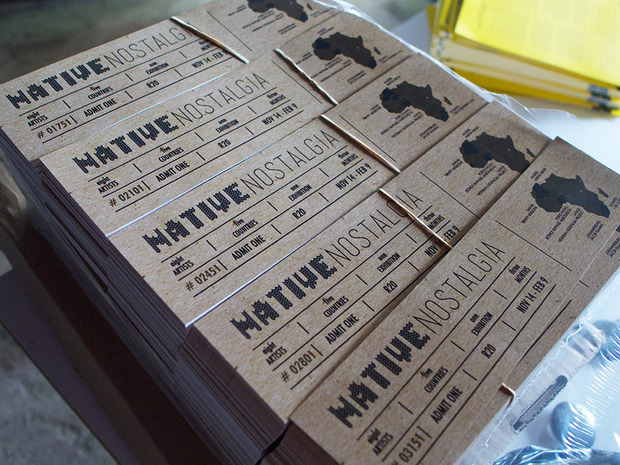MOAD, Museum of African Design
The first of its kind, Pan-African design museum in Johannesburg launches Native Nostalgia


Across the entire continent, one museum stands as a representation of contemporary African design. The newly opened Museum of African Design (MOAD), located in Johannesburg’s Maboneng Precinct has become a hub for not only South African work, but artistic endeavors from all over Africa. As Maboneng continues to emerge as one of Johannesburg’s most fascinating and fast-paced neighborhoods, and witnesses an influx of creators and residents, the museum was no longer a desire—it became a need and ultimately a reality. More than a gallery space, the center dedicates itself to uncovering, encouraging and sharing design growth through large-scale unified temporary exhibitions.
“Native Nostalgia,” opening tomorrow 14 November, will be the museum’s first Pan-African, full-length exhibition. A group showcase, the show explores nostalgia for bygone eras within modern narratives and form across five African countries: Senegal, Nigeria, Algeria, Benin and South Africa. Through photography and architecture, communal archives and historical reenactment, and even cartography, works cross cultural landscapes, from Nigeria’s Nostalgia Project analog photo collection to Johannesburg’s “280E, I See a Different You” 1975 Mercedes 280E, a representation of durability. Each artist has a dialogue with the past and present in their work—often confronting the issue of knowledge from nostalgia for difficult times.
While installing this new show, the museum’s director and curator of “Native Nostalgia” (and CH contributor), Aaron Kohn took time to speak with us about the museum’s inception and the programs they have created—above and beyond that of traditional museum expectations—including an incubator and a weekly salon.

Aware that this was going to be a first, how did you select this locally debuted representation of African art and design?
I actually didn’t realize that MOAD was a first on the continent until well into the planning phase. The Maboneng Precinct—where MOAD is located—is, in many ways, “South Africa’s Design Neighborhood,” so the spot made sense for a number of reasons. More interesting perhaps, was that museums in Africa are largely dedicated to preserving local culture and heritage—and when they’re competing with buyers in New York and Paris, they’re limited. Then galleries are more interested in going to Frieze or the Armory and selling abroad, than in showing within the continent. So MOAD has always consciously been interested in creating a space that artists and museums would be excited to collaborate with, within the continent.
Can you describe the nature of MOAD Beta? As a laboratory, is it more of an incubator or talent-scouting center?
It looks like it will end up being a maker-space/hacker-space to teach design, engineering and innovation. There are a number of incubators and tech-focused co-working spaces in Johannesburg and around Africa, and we are involving as many people as we can to build this initiative next year.

How has MOAD “Learn” outreach begun to effect the community? What are your hopes for this?
South Africa has had a lot of issues with xenophobia against African immigrants from other parts of the continent, yet this is a crazily diverse city. Pretty much every part of Africa is represented here, yet it’s not only racially segregated, but also segregated by nationality. So one aspect of reaching out to the community is to create a place for different nationalities represented in Johannesburg to be able to interact with works from their home nations and museum-goers. The Trinity Session’s Senegalese Tea Ceremony at the “Native Nostalgia” opening Thursday is part of this. MOAD “Learn” itself will end up looking like a pretty typical museum education department. Curricula development around exhibitions, school tours, art classes, etc.
How did MOAD arise from your work with the Maboneng Precinct? How did you connect with founder Jonathan Liebmann?
I connected with Maboneng because it was where I spent a lot of time as a student in Johannesburg while on exchange, and while creating African Lookbook. The building that houses MOAD has been called “MOAD” since it was acquired in 2011 by the Maboneng Precinct, but it was only about a year ago that I started talking to them about how to turn it into an operational museum. African Lookbook was actually meant to be the museum shop but, in an email I wrote late one night on a whim, I outlined the entire basis for how the museum would operate, its goals and programming.

How do you plan on extending from South African-centric work to a full representation of the continent?
I think it will be easy because there is so much exciting content that has never been to South Africa—so it’s captivating for an audience that doesn’t go to museums in general.
How would you describe the works presently on display? What other over-arching themes are represented?
The first exhibition, “Southern Guild,” showcased 100 luxury designers and artists who have shown at fairs from Basel to Collective and Miami Design Week. “Native Nostalgia” is focused on how young artists are reflecting on historical design, and our next exhibition will be a survey of fashion and trends. It’s sort of all over the place, but very contemporary. When David Adjaye delivered the opening address on the 24th, he said it’s fitting that a design museum be in an old factory, because that is where things are made. And on the one hand, it’s challenging because there are no white walls, but on the other hand, the space is rugged and we can do pretty much anything we dream up inside.
“Native Nostalgia” opens tomorrow, 14 November, and will run until 9 February 2014 at MOAD, 281 Commissioner Street, City and Suburban, Johannesburg 2094.
Photos courtesy of the Museum of African Design












